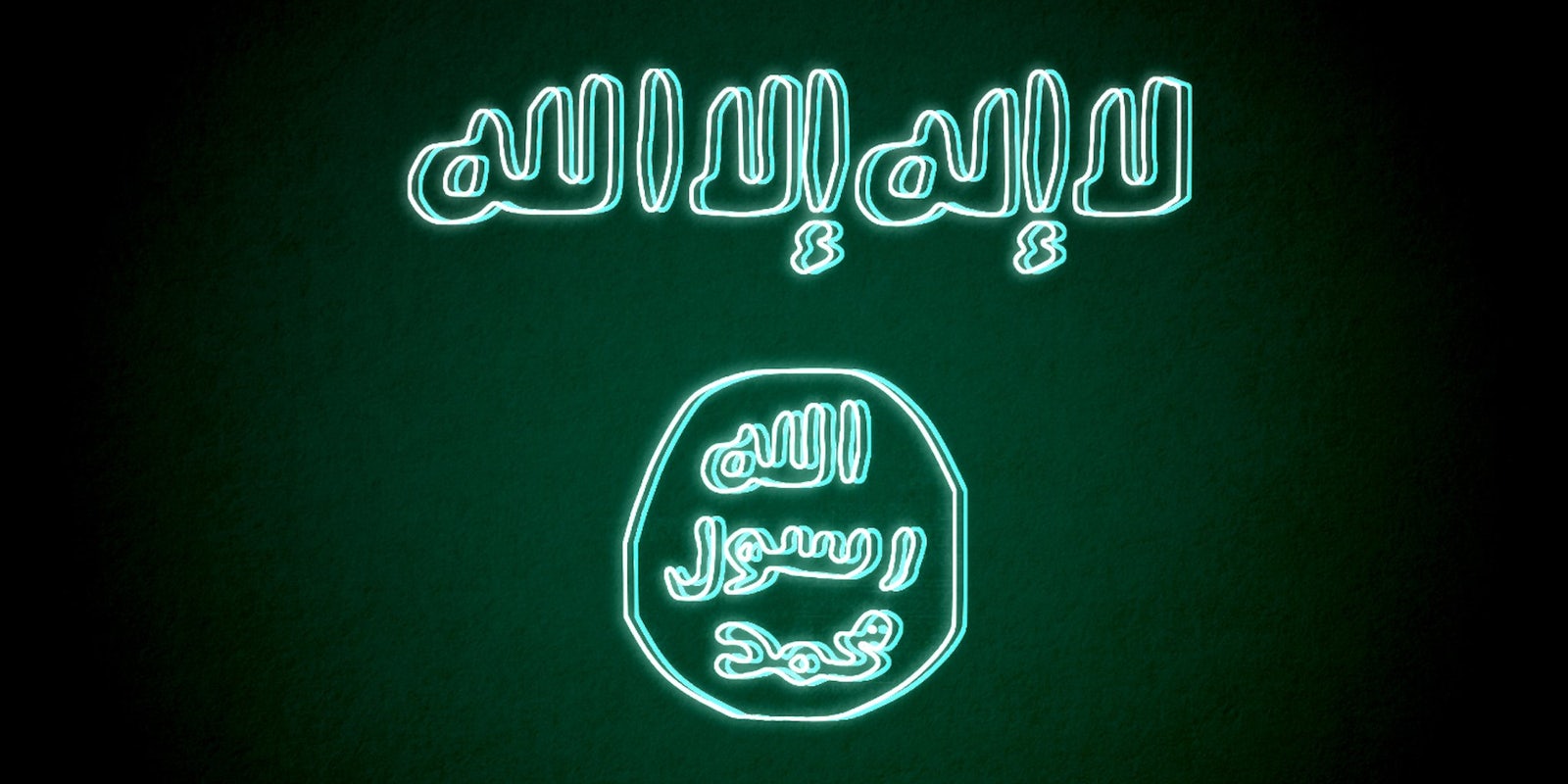If the bullish talk coming out of the White House and Pentagon is to be believed, the U.S.-led campaign against Islamic State has certainly turned a corner—particularly in the cyber realm.
Top U.S. military officials in recent weeks have publicly touted their gains against the terrorist organization online, a part of the ISIS fight which until now has been kept tightly under wraps. “We are using cyber tools, which is really a major new departure,” Defense Secretary Ashton Carter told NPR. “So these are strikes that are conducted in the war zone using cyber essentially as a weapon of war just like we drop bombs,” he said in February.
Bob Work, the Defense Department’s No. 2 official, was more pointed in addressing America’s cyber war against ISIS.
“We are dropping cyber bombs.” he told reporters in March “Just like we have an air campaign, I want to have a cyber campaign. I want to use all the space capabilities I have.”
Recent reports claim U.S. military hackers are breaking into the computers of Islamic State operatives, gleaning information the group may be transmitting online to target insurgent leaders, disseminate misinformation, and recruit proxy fighters and intelligence assets.
The underlying strategy driving all this lethal technology has not kept pace—and that is a mistake.
Just a few months ago, the Obama administration unveiled a new task force to fight ISIS online leading that fight with pledges of interagency cooperation and reaching out to partner nations in the region to combat the group’s virulently viral message.
But in a recent speech at CIA headquarters, President Barack Obama barely mentioned the task force or its approach to disrupt Islamic State’s efforts in the cyber world. The silence from the Pentagon on the task force was just as deafening.
It seems the White House and Pentagon are now trying to bludgeon ISIS online in the best way they know how—air power, drone strikes, special operations forces, and now cyber bombs.
But while the weapons and tactics in America’s fight against ISIS have quickly transitioned to the from the real-world battlefield to the virtual one, the underlying strategy driving all this lethal technology has not kept pace—and that is a mistake.
The fact is, as with the Taliban, al Qaeda and now the Islamic State—to kill a fanatical, extremist organization you must extinguish idea behind it, not just those who take up arms in violent support.
To kill a fanatical, extremist organization you must extinguish idea behind it, not just those who take up arms in violent support.
“We cannot win this war by killing them [ISIS], we cannot kill our way out of this war,” State Department spokeswoman Marie Harf said during an interview in February. “It’s not just a fight about dropping bombs on terrorists.”
Even retired Gen. Davd Petraeus, the former CIA chief and the architect behind the resurgence of the Pentagon’s counterinsurgency doctrine in the Mideast and southwest Asia, reiterated in a recent Washington Post op-ed that the White House may be again going down a perilous path in its attempt to bomb ISIS back into antiquity.
“It is becoming clear that the path the United States and coalition partners pursue has to be comprehensive and not just a narrow counter terrorism approach. It is increasingly apparent that more than precision strikes and special operations raids are needed,” Petraeus wrote.
The terms counter terrorism and counter extremism have become synonymous in the growing lexicon of terms and phrases used in the debate on America’s fight against ISIS. But relying heavily on counter terrorism strategy tactics to snuff out an extremist ideology will all but ensure the so-called long war on terror will continue for generations to come.
Carlo Munoz is a military correspondent based in Washington D.C., focusing on U.S. defense and national security policy, programs and operations. He was most recently a foreign correspondent with the Stars and Stripes, based in Kabul, Afghanistan. His work has appeared in the Guardian, Atlantic Media, United Press International, Air Force Magazine, USNI News and elsewhere. Follow him on Twitter @NatSecCarlo


